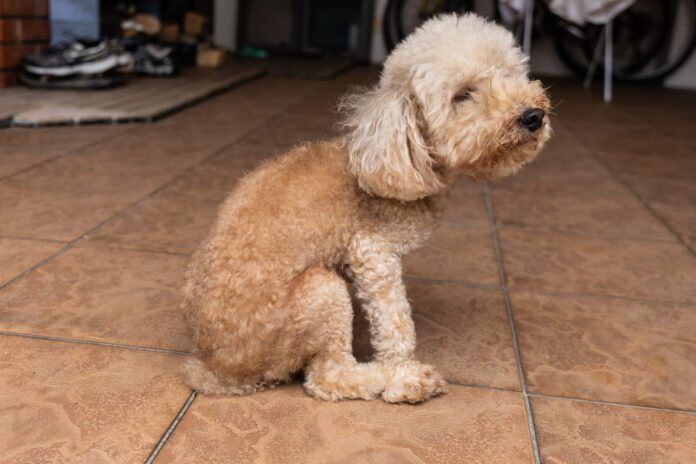One of the most effective ways to help manage and prevent anal-gland problems in dogs is through dietary adjustments, particularly by increasing your dog’s fiber intake. Low-fiber food can cause anal-gland issues in dogs, but it’s one of several risk factors.
“Food-allergy dermatitis and atopic dermatitis may contribute to anal sac disease. Other risk factors include anatomic abnormalities of the anal sacs, chronic diarrhea, constipation, obesity, and a low-fiber diet,” says Dr. Brian Collins, a veterinarian at the Richard P. Riley Canine Health Center at Cornell University.
What are Anal Glands?
Anal-gland issues are a common health concern for dogs, causing discomfort, bad odor, and potential complications if not properly addressed. These problems are often related to anal-gland impaction, where the scent glands near the anus of dogs become full and inflamed, leading to discomfort, scooting, excessive licking, and infections.
Dogs have two small sacs (anal glands) located on either side of the anus. These glands secrete a smelly substance used for marking territory. Normally, these glands express themselves when the dog defecates, with the stool applying pressure to the glands as it passes. However, some dogs experience impaction or infection of the anal glands, which can cause pain, swelling, and discomfort.
Common symptoms of anal-gland issues include:
- Scooting or dragging their bottom
- Licking or biting at their rear end
- A foul, fishy smell
- Swelling or redness around the anus
- Difficulty or discomfort while defecating
In some cases, the glands may need to be manually expressed. (Manually expressing the anal glands is not difficult, but you need training to do it.) In severe cases, surgery may be required. However, many anal-gland problems can be managed or prevented through the diet, specifically by increasing the fiber content in the food.
Dog Food High in Fiber
Fiber plays a key role in promoting healthy digestion and bowel movements. It adds bulk to the stool, which in turn helps the anal glands naturally express themselves during defecation. Larger, firmer stools help provide the necessary pressure on the anal glands to encourage expression, reducing the likelihood of impaction.
The two main types of fiber in dog food are soluble fiber and insoluble fiber. Soluble fiber is found in ingredients like sweet potatoes, pumpkin, and psyllium. Soluble fiber absorbs water and forms a gel-like substance in the intestines. This helps soften stool and can assist in managing diarrhea and constipation.
Insoluble fiber, also known as bulk fiber, is found in ingredients like celery, green beans, cellulose, and wheat bran. This fiber adds bulk to the stool and improves overall consistency. While both types of fiber are beneficial for anal gland health, insoluble fiber is particularly important for providing the bulk needed to properly express the anal glands.
Best High-Fiber Foods for Anal Glands
When choosing a high-fiber dog food for anal-gland health, look for formulas that include high-fiber ingredients such as brans, oat or rice hulls, beet pulp, cellulose, alfalfa, green beans, and psyllium husk. The ideal fiber content for a dog’s diet depends on the dog’s age, breed, and overall health, however, most adult dogs benefit from a fiber intake of 2.5% to 5% on a dry matter basis. For dogs with anal gland issues, a higher fiber content (5% or more) may be beneficial. Adding vegetables, such as green beans, can also help increase fiber intake for your dog. You can search Whole Dog Journal’s Dry Dog Food Database for foods with higher fiber values.
High-fiber dog food can play a crucial role in managing and preventing anal gland issues by ensuring stools are large and form enough to express the glands naturally. By choosing the right high-fiber dog food and working with your veterinarian, you can ensure your dog stays comfortable, healthy, and free from the discomfort of anal gland issues.






